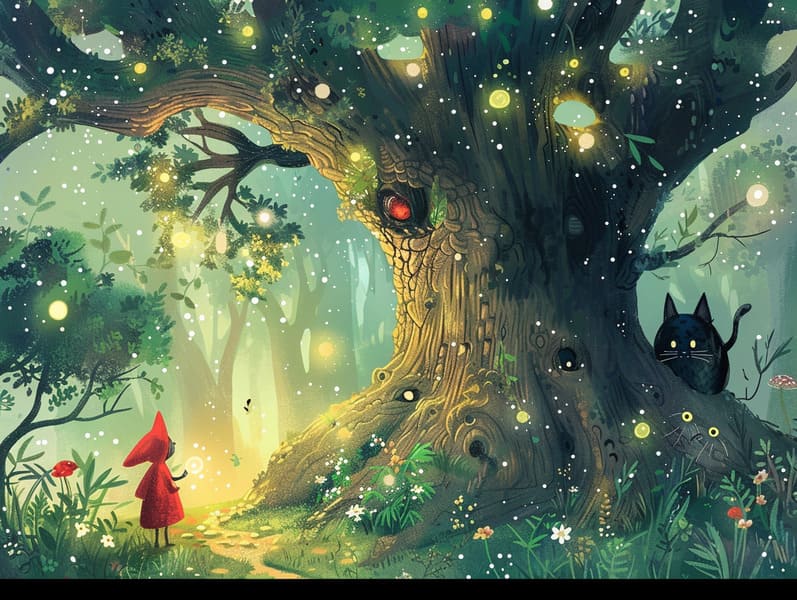The Story Behind Bedtime Fairy Tales and the Unending Loveliness.
The Story Behind Bedtime Fairy Tales and the Unending Loveliness.
Blog Article

Legendary fairy tales have ancient roots. These narratives have been told from one generation to the next well before they were ever published. They developed from a variety of societies, including Eastern traditions. They were initially passed along among adults, often carrying themes and messages aligned with the societal norms and beliefs of the time.
Jacob and Wilhelm Grimm, Jacob and Wilhelm Grimm, were among the first to assemble many of these beloved narratives. Their published works, "Grimm's Story Collection," included classics like "The Little Glass Slipper," "Hansel and Grethel," and "Snow-White and Rose-Red," which have since become staples in the world of classic fairy tales. Similarly, Andersen's charming fairy tales, such as "The Little Mermaid," and "The Duckling's Story," have captivated hearts worldwide, cementing their place in the pantheon of iconic fairy tales.
Though they are centuries old, fairy tales remain as applicable as ever, especially as kids' bedtime tales. These enchanting tales are now available in multiple formats, including colorful picture books, enchanting animations, and digital storybooks.
Their persistent charm can be ascribed to several fascinating points:
Significant Morals: Timeless fairy tales often provide important moral lessons. Stories like "The Shepherd Boy and the Wolf" teach the virtue of integrity, while "The Tale of the Tortoise and the Hare" illustrate the merits of resolve and humility. These narratives offer the young clear distinctions between ethical and unethical, helping to shape their moral compass in a gentle yet deep way.
Compassion and Insight: Timeless fairy tales frequently portray characters facing trials and tribulations, inspiring readers to empathize with their struggles and root for their triumphs. For instance, "Beauty and the Beast" conveys the significance of seeing inner beauty to understand the real character of a individual, developing perception and awareness.
Cultural Perception: Many classic fairy tales are interwoven with the cultural contexts from which they grew. Exploring these tales can provide captivating looks into different traditions, promoting a sense of global understanding and comprehension.
Fantasy and Innovation: The enchanted elements in old fairy tales—talking animals—promote children’s visions. These fairy tales transport readers to otherworldly realms, triggering creative dreams and a sense of enchantment that stays a lifetime.
Classic fairy tales are not only captivating but also educational. They work as entrancing tools in promoting various brain and heart skills in the young. When timeless fairy tales are recited, they advance language proficiency by presenting new lexicon and sophisticated sentence structures. This practice also boosts listening abilities and mindfulness, as kids concentrate deeply, expectant to see what happens next.
Furthermore, talking about the themes and characters of fairy tales can strengthen evaluative skills and analytical skills. Children are taught to detect patterns, guess what will happen, and grasp cause and effect. These contemplations also ease young readers say their thoughts and feelings, adding to their emotional intelligence.
In today’s electronic age, the accessibility of digital fairy tales has made these tales more attainable than ever. Web platforms and web apps make available extensive collections of traditional fairy tales that can be explored or heard anytime, anywhere. Fairy tales narrated are particularly in demand, featuring an immersive method for kids to enjoy these fantastical tales. Narrated books and read-out-loud videos take characters and settings to life, often enhanced by whimsical audio effects and background music that enhance the tale experience.
The lasting allure of classic fairy tales lies in their ability check it out to modify to new eras while keeping hold of their central messages. Contemporary takes of these fairy tales often show more diverse protagonists and modern settings, making them familiar to today’s audience. However, the central morals of valour, sympathy, and fair-mindedness remain unchanged, continuing to connect with young listeners of all ages.
Old fairy tales also offer a sense of serenity and predictability. They present to a neat narrative with a apparent beginning, middle, and end, often winding up with the conclusion of conflicts and the triumph of rightness over wrongness. This certainty can be placating for the young, delivering a sense of solidity in an fluid world.
Classic fairy tales continue to bewitch and coach new generations, maintaining their beauty and applicability in modern society. As kids' bedtime tales, they put out a perfect blend of allure and teaching, boosting moral values, empathy, and creativity. The availability of internet fairy tales and the well-liked nature of fairy tales read out loud make sure that these old fairy tales remain obtainable to new generations.
By guarding and broadcasting these fairy tales, we continue to glorify the rich tapestry of folklore and cultural heritage. Whether you are perusing a vibrantly illustrated book, accessing a web-based library, or listening on an read-aloud story, the captivation of bedtime fairy tales is always within reach. These fairy tales highlight of the enduring nature of fairy tales and its ability to gather us across epochs and places.
Even if you are experiencing a colorful picture book, viewing a web-based collection, or playing an sound book, the delight of children's fairy tales is always within reach.
These tales remind us of the unceasing strength of fairy tales and its ability to join us across epochs and places, making a tie that delights and instructs alike.